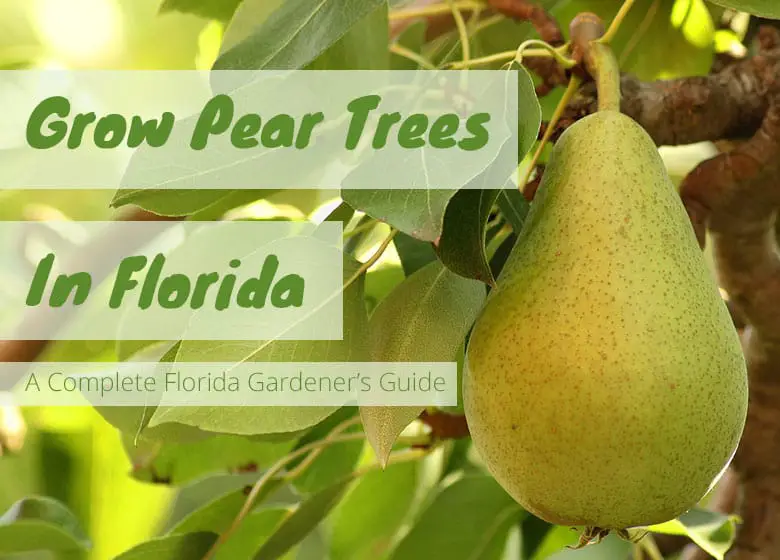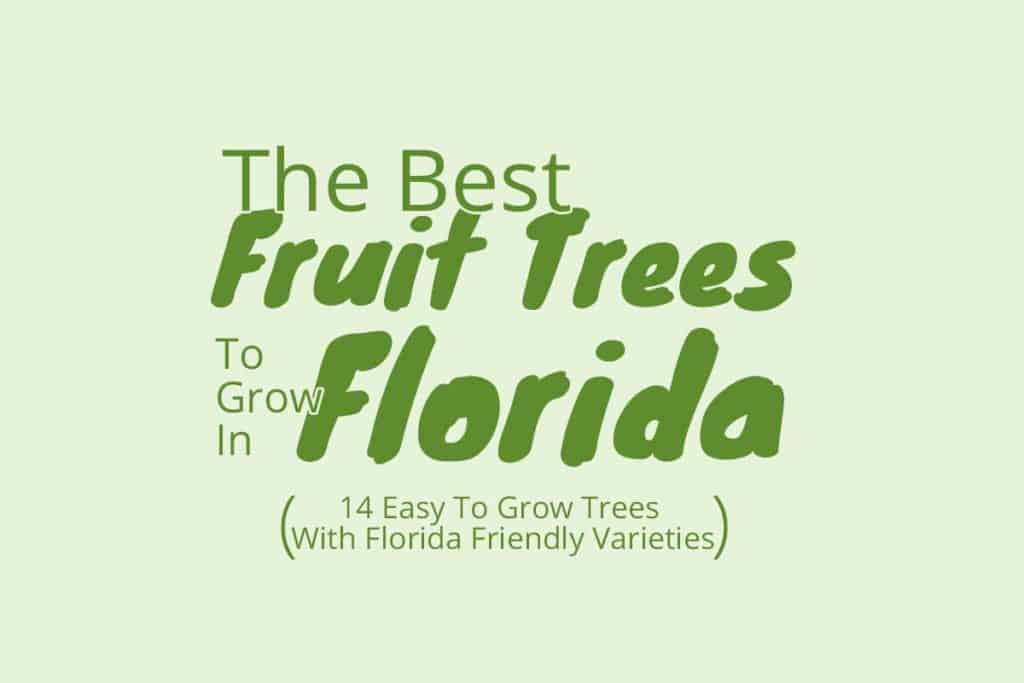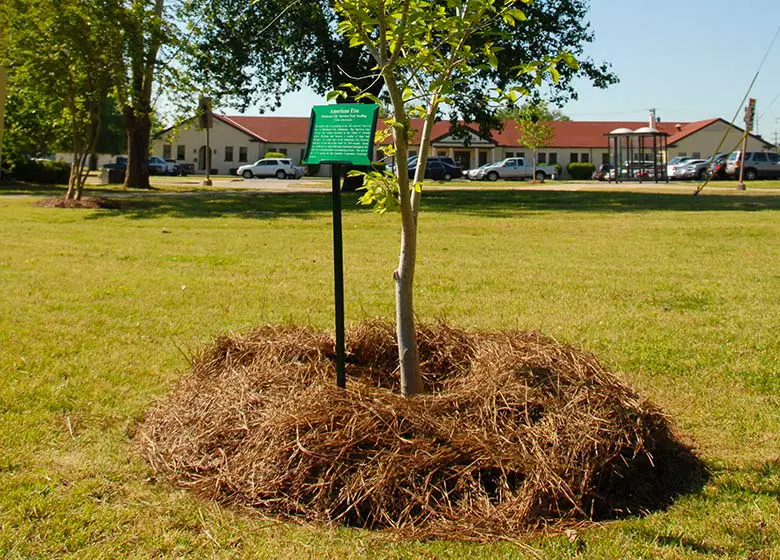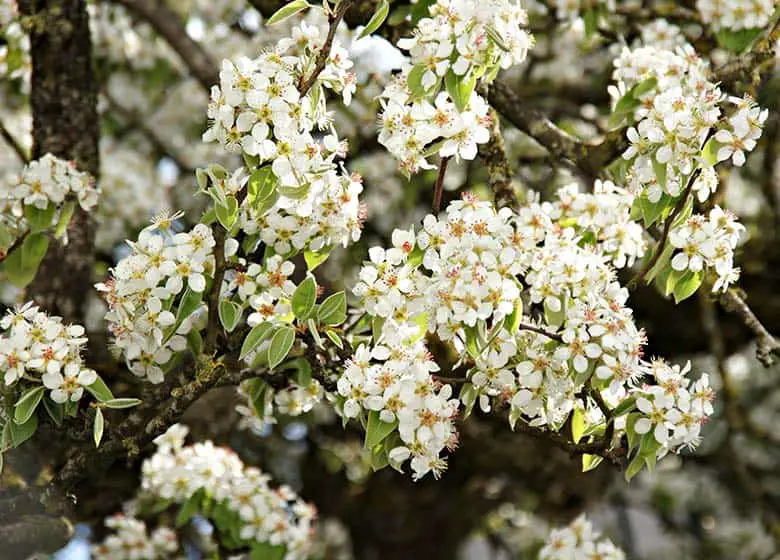
Will pear trees grow in Florida?
You can grow pear trees in North Florida and parts of central Florida relatively easy. Those in the southern parts of the state will struggle to produce fruit due to a low number of chill hours. Choose low chill hour varieties like FLoridahome, Hood, Kieffer, and Pineapple.
Growing pears in Florida can be done, you probably have a few extra questions though. Things like when do I plant a pear tree? How do I fertilize? Do I need to prune this thing? Watch this quick video and read on to learn everything you need to know about growing pears in Florida.
Best Type Of Pear To Grow In Florida
The best varieties of pear to grow in Florida are low chill hour kinds. A chill hour is anything below 45°F. The varieties mentioned here have mostly been developed by the university of Florida
- Asian
- Baldwin
- Floridahome
- Hood
- Kieffer
- Pineapple
In central Florida, we can see anywhere between 150 – 350 chill hours each year. North Florida sees quite a bit more, and south Florida quite a bit less.
Because those in north Florida see more chill hours, you have more options than whats on this list.
If you are looking to buy pear trees and you live in the central FLorida area, check out Hawkins Croner Nursery. They don’t deliver but they do have a great selection of fruit trees.

When To Plant Pear Trees In Florida
The best time to plant your pear tree will depend on a few things. What age is your tree? If you are working with a well-established tree you can honestly plant this at any time.
A tree that’s living in a 5-10 gallon pot can be planted at any time of the year.
If you are dealing with a very young tree or even bare rootstock, the best time to plant would be during dormancy. in Florida, this is usually around January and February. These are our coldest months of the year.
When planting pear trees, be sure to dig a hole that is twice the depth and width of the root ball. You want to give the tree plenty of space with loose soil. This makes it easier for the tree to spread it’s roots.

It’s also best practice to lay a thick layer of mulch and even make a little donut around the tree. This helps retain moisture.
Caring For Pear Trees
Pear trees enjoy full sun, organic-rich soil and good pruning in order to produce an abundance of fruit.
Be sure to pick a spot that gets at least 8 hours of sun for maximum fruit production and growth.
Get your pear tree on a regular watering schedule. After first transplanting your pear tree you should be watered every day for at least 3 weeks.
- weeks 1-3: Water everyday
- weeks 3-5: Water every other day
- weeks 5+ : Water once a week
After that start to cut back on watering, watering every other day for 2 weeks. After that cut back to watering once a week.
You may see browning and dropping of leaves due to water stress if not watered enough.
Pruning Pear Trees
Pear trees have an upward growth habit. Trees can grow as large as 30 feet tall and 10+ feet wide. A tree this large can make harvesting fruit difficult. I recommend pruning your tree in the fall, when your tree is dormant. In the first year of growth, the Migardener recommends pulling all flowers off. This stops the tree from making fruit but allows it to really get established.
After the first year of growth, some branches on your tree will begin to get long and weak. They look like they would snap if even just one fruit were to be on them. It’s a good practice to take those branched and cut them in half.
To keep your tree a manageable height I think it’s also a good idea to lop off the leading branch. This encourages the tree to have more lateral growth, causing a tree that is shorter but more full.
Fertilizing Pear Trees
Wait three weeks after transplanting before you begin fertilizing. You also want to wait until after their dormancy period to fertilize as well.
the first fertilizer application should be high in nitrogen. This will really help the plant start to produce that green leafy growth. As the tree begins to flower you should switch to a fertilizer that has a good amount of phosphorus which helps with good flower and fruit production.
Be sure to follow the directions on your fertilizer bags.
Harvesting Pear Trees
Some pear trees are self-pollinating but most of them require cross-pollination. This means that you need more than one type of pear tree.
In order to get good fruit production you need more than one pear tree
If you planted a seed (which is very difficult) you can expect to wait 4-6 years before fruit production. If you planted a grafted tree you can expect fruit within the first 1-3 years of age.

Trees will begin to bear flowers when they come out of their sleepy time. After flowers appear you will start to see little tiny pears (as long as cross-pollination has occurred). From this point it usually take about 2 months for the pears to ripen up.
Issues You May See With Pear Trees
Pear trees have a few common issues. The most common in Florida is probably fire blight. This causes the leaves and branches of peach trees to run brown and die.
Branches that have been affected by fire blight should be removed from the tree as quickly as possible.
You may also notice a leaf spot issues. You can solve these by trimming infected leaves and spraying with a copper fungicide.
Floridahome is resistant to both of these issues.
Growing Pear Trees In Florida
- Pear trees can be grown easily in north and central Florida with low chill hour varieties.
- The best varieties of pear trees for Florida are:
- Asian
- Baldwin
- Floridahome
- Hood
- Kieffer
- Pineapple
- Plant more than one pear tree for cross-pollination.
- A tree that fills a 5-10 gallon pot can be planted at any time of the year.
- Be sure to plant in a spot with full sun and place your tree on a regular watering schedule like the one mentioned above.
- Prune pear trees to a manageable size.
- Fertilize pear trees with a high nitrogen fertilizer 3 months after planting. When the flowering season rolls around fertilize with a high phosphorous fertilize.
Related Questions
What do Florida grown pears taste like? Just like any other pears. Sweet and slightly tart.
Where can I buy Pear Trees in Florida? If you want to stay local check out Hawkins Croner Nursery in Plant City Florida. Kerby’s nursery in Brandon Florida also has a large selection of FRuit trees to choose from.
What other fruit trees grow in Florida? There is a long list of fruit trees that grow well in all parts of the state. North Florida has a much different selection of fruit trees than South Florida. Check out the most popular fruit trees to grow in Florida here.

